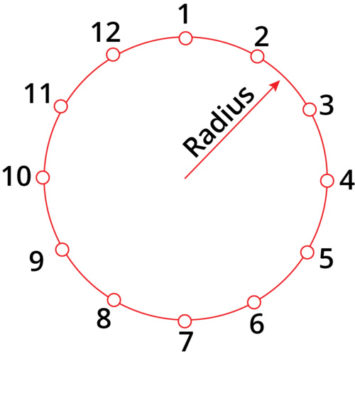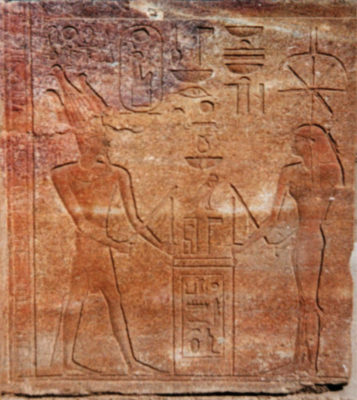 Every year our field bags get increasingly loaded with technology—total stations, GPS units, lidar, drones, apps, and software—tools that make things easier, allow us to generate more data, and expand our reach. It makes me wonder how difficult things were for surveyors of the past to complete their jobs!
Every year our field bags get increasingly loaded with technology—total stations, GPS units, lidar, drones, apps, and software—tools that make things easier, allow us to generate more data, and expand our reach. It makes me wonder how difficult things were for surveyors of the past to complete their jobs!
However they did it, they sure knew what they were doing.
As most surveyors know, Egypt likely produced the first known surveyors, known as “Rope-Stretchers” [harpedonaptae in Greek]. They earned that name because one of the tools used in surveying was a calibrated rope. These ropes were specially-treated to hold their length by being stretched out taut between stakes and then rubbed with a mixture of beeswax and resin. They were graduated by 13 knots tied at equal intervals (small or large, depending on the intended use). A commonly-used rope was made up of 12 royal cubits (a cubit is the length from the bent elbow to the tips of the fingers, or approximately 20.59 inches). This tool was more than just a knotted rope. It was the key to practicing sacred geometry, the purview of priests and royalty.
The inherent harmony in geometry was accepted by the ancient Egyptians as evidence of the divine plan that upholds the entire world. The use of geometry allowed humans to determine and incorporate this pre-existing divine order into their structures. Sacred geometry, where all figures can be drawn or created using a straight line and a compass, was used to produce harmonic proportion, and the practitioners of this geometry were surveyors. The act of laying out buildings was literally done religiously—with an elaborate ceremony. Royal tombs, temples, pyramids and palaces, even the Pharaoh took part in the ceremony, playing the part of the chief surveyor.
“The most famous depiction of the ceremony comes from the temple of Edfu. Here the king is shown with the goddess Seshet, who is the personification of the art of writing and knowledge. Alongside the image is an inscription that reads, “I take the stake and I hold the handle of the mallet. I hold the measuring cord with Seshet.” So the king basically acts as a chainman in the ceremony. The king also took part in the celestial observations, at least ceremonially, to establish the alignment of structures.”
—Surveying in Ancient Egypt, Joel F. Paulson, presented at FIG Working Week 2005 GSDI-8
So for special occasions, the Pharaoh got to pretend he was a suveyor! That sounds pretty harmonious to me.
More than a knotted rope
 The equally-spaced 13-knot cord was the basic tool used to establish various geometric shapes. For example, the rope can be used to create an equilateral triangle, where the three sides are made up of four units each. It can also create a right-angle triangle with sides 3, 4 and 5 units.
The equally-spaced 13-knot cord was the basic tool used to establish various geometric shapes. For example, the rope can be used to create an equilateral triangle, where the three sides are made up of four units each. It can also create a right-angle triangle with sides 3, 4 and 5 units.
Of course, once you have a right triangle with the proportion of 3:4:5, you have the basis for rectangles and squares, which can be used to design almost any building.
Most important of all, this rope can be used to create a circle, which is the symbol for the Egyptian god Re (the cosmic creative force). When the cord is looped as a full circle, that radius is 1.91 cubits . . . which also happens to be a meter. Did those ancient surveyors know something prescient?
How did they make sure the pyramid was level?
 A water level was used to create a level base. The bedrock was networked with narrow trenches, then filled with water. The waterline was marked on all the trench walls, the protrusions cut down, and the trenches re-filled with stone to create a level base.
A water level was used to create a level base. The bedrock was networked with narrow trenches, then filled with water. The waterline was marked on all the trench walls, the protrusions cut down, and the trenches re-filled with stone to create a level base.
The second type of level was an A-frame with a plumb bob suspended from the apex. Since the Egyptians understood the isosceles triangle, stones could be cut and chiseled square, then mortared into place using this instrument for precision. With these tools, the Egyptian surveyors were able build structures that are testaments to their understanding of geometrical harmony and complex engineering principles.
Using the simple knotted rope, and two types of levels, the Egyptian surveyors were able to create structures that are acknowledged as wonders of the world to this day.
The geometry of the Great Pyramid of Giza remains a hot topic of conversation today. The facts are pretty straight-forward. The Pyramid was the largest monument of its kind ever constructed and remains one of the Seven Wonders of the Ancient World. It was built with approximately 2.3 million blocks of stone, many of which weigh more than 3 tons, with the total weight calculated to be about 6 million tons.
However, its geometry is the pyramid’s most stunning aspect.
- If 2pi is multiplied by the perimeter of the Pyramid, that sum is equal to its height.
- The azimuth of the Pyramid during summer solstice sunrise measures from true north (with only a 3/60th of a degree of error), and the sides seem to case a shadow effect to make it appear to have eight sides instead of four.
- The base of the Pyramid is level to within just 2.1 centimeters; the average deviation of the sides from the cardinal direction is 3 feet 6 inches of arc.
- The greatest difference in the length of the sides of the Pyramid is 4.4 centimeters.
That’s some amazing surveying!
However, not all Egyptian surveyors worked on building pyramids—there was a great deal of work surveying nearby fields. Most of the land was owned by the Pharaoh, which meant that the Pharaoh was very interested in collecting rents and taxes on the land. (After all, there were tombs and pyramids to build, and they didn’t come cheap). What’s interesting is that this dichotomy of survey roles is still true today. Surveyor duties can range from new construction on large projects like skyscrapers to residential property line marking. Like the Pharaoh understood back in the day, both skills are the bedrock of a successful culture.
In those days, surveying had to be done yearly, due to the annual flooding of the Nile. Some monuments survived the flooding, but the land would have to be re-surveyed and so the Rope-Stretchers were brought in to put order to things.
Herodotus (484-425 BCE) wrote in Item 109 of Book II Enerpre as follows:
Egypt was cut up: and they said that this king distributed the land to all the Egyptians, giving an equal square portion to each man, and from this he made his revenue, having appointed them to pay a certain rent every year: and if the river should take away anything from any man’s portion, he would come to the king and declare that which had happened, and the king used to send men to examine and to find out by measurement how much less the piece of land had become, in order that for the future the man might pay less, in proportion to the rent appointed…
In learning more about how ancient Egyptian rope-stretchers did their work, I became aware of one elementary theory. “The more things change, the more they stay the same.” In other words, even though the ancient Egyptians’ tools seem rudimentary today, the principles of measuring and construction are still the same as it was then. We rely on the same sacred geometry, trigonometric formulas, and universal mathematic language, and it will continue to be the fundamental principles that will be relied upon centuries into the future. ◾
Emily Pierce is Berntsen’s business development manager. The former president of the Wisconsin Society of Land Surveyors, Pierce has decades of experience as a surveyor and leader. Prior to joining Berntsen, Emily served as director of surveying operations and senior land surveyor for Steigerwaldt Land Services, LLC in Tomahawk, Wisconsin. She also served as the county surveyor for Marathon County, Wisconsin.
References:
Rope-stetcher image: Created: circa 1400 date QS:P571,+1400-00-00T00:00:00Z/9, P1480, Q5727902-1352 B.C. Period: New Kingdom Dynasty:
Dynasty 18 Reign: reign of Thutmose IV–Amenhotep III
https://www.fig.net/resources/proceedings/fig_proceedings/cairo/papers/wshs_02/wshs02_02_paulson.pdf
https://www.researchgate.net/publication/225981423_Harpedonaptae_and_abstract_convexity
Mathematical Facts About The Great Pyramid—Handylore
Sacred Geometry—Tehuti Research Foundation (egypt-tehuti.org)

